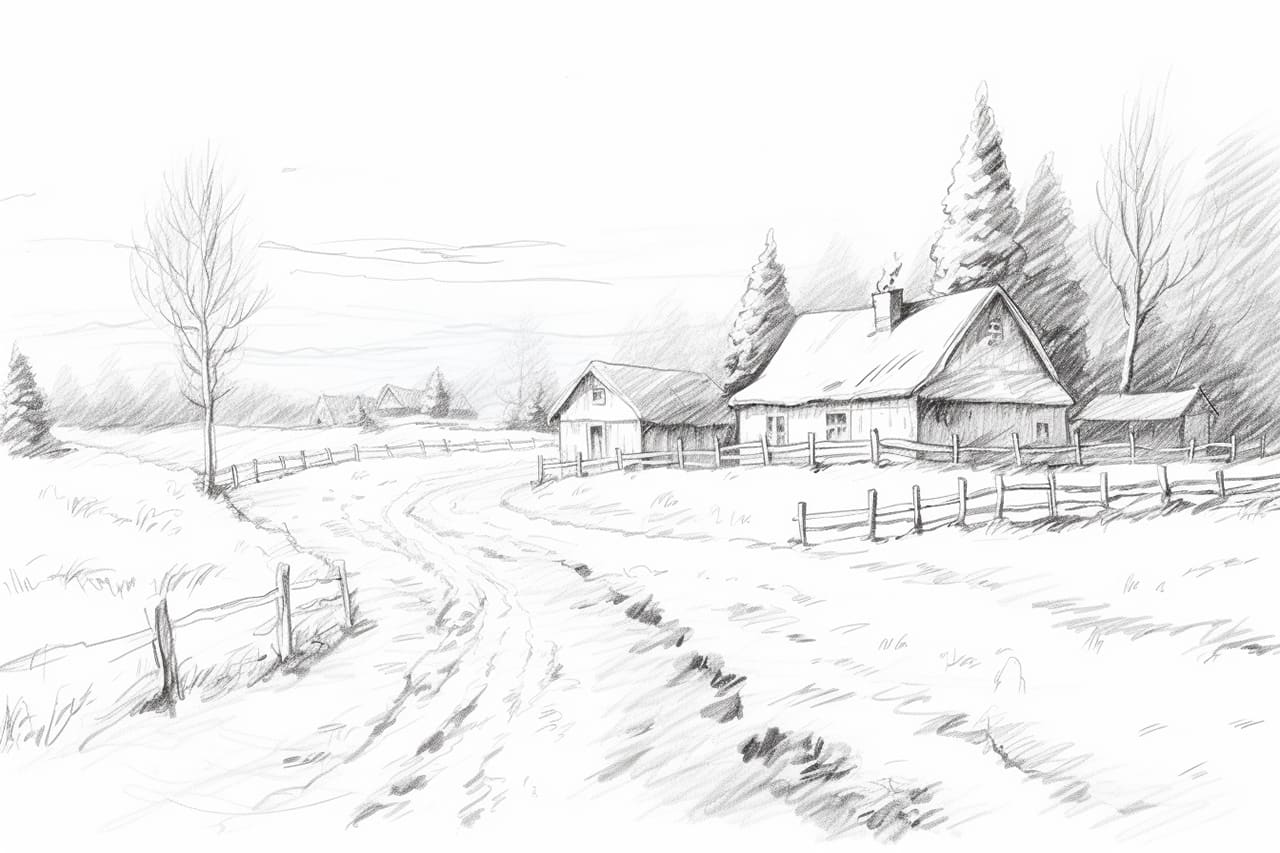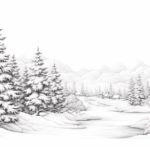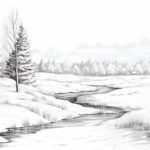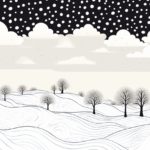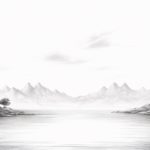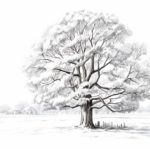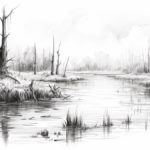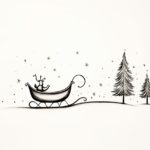Drawing a beautiful winter scenery can be a delightful way to express your creativity and capture the serene charm of the season. Whether you’re an experienced artist or just starting out, this step-by-step tutorial will guide you through the process of creating a stunning winter landscape on paper. So grab your drawing tools, find a cozy spot, and let’s get started!
Materials Required
Before we begin, make sure you have the following materials handy:
- Drawing paper or sketchbook
- Pencils (HB, 2B, 4B, and 6B)
- Eraser
- Blending stump or cotton swabs
- Colored pencils (optional)
- White gel pen or white acrylic paint (optional)
Now that we have our materials ready, let’s dive into the creative process!
Step 1: Sketch the Basic Composition
Start by lightly sketching the basic composition of your winter scenery. Imagine the elements you want to include, such as snow-covered trees, a distant mountain, or a frozen lake. Use a light pencil (HB) to loosely outline these elements, focusing on the overall placement and proportions. Remember, this is just a preliminary sketch, so don’t worry about adding too many details at this stage.
Step 2: Define the Foreground
Next, let’s define the foreground of our winter scenery. Start by adding more details to the trees or any other prominent objects in the front. Use a softer pencil (2B or 4B) to create darker lines and shading. Pay attention to the shape and texture of the objects, as well as the direction of the tree branches. Remember to keep it loose and organic, as the aim is to capture the scene’s natural beauty.
Step 3: Add Depth with Middle Ground Elements
To create a sense of depth in your winter scenery, it’s important to include middle ground elements. These could be additional trees, rocks, or any other objects that appear closer to the viewer than the background elements. Use a combination of light and shadow to give these objects dimension. Experiment with different pencil grades to achieve varying levels of darkness and texture.
Step 4: Detail the Background
Now it’s time to add details to the background of your winter scenery. Draw a distant mountain range or hills to create a sense of distance. Use a light pencil (HB or 2B) to sketch the outlines, and gradually add shading to give the mountains a three-dimensional appearance. Keep in mind that as objects recede into the distance, they become less defined and lighter in value.
Step 5: Depict a Snowy Landscape
To capture the essence of winter, we need to depict a snowy landscape. Start by lightly shading the ground area with a light pencil (HB), leaving areas untouched to represent the snow. Then, use a blending stump or cotton swab to gently blend the shading, creating a smooth and even texture. Leave some areas untouched to add variety and mimic the natural unevenness of snow on the ground.
Step 6: Add Falling Snow
To create a more dynamic and whimsical winter scenery, let’s add falling snow. Use a softer pencil (4B or 6B) to create a few soft, curving lines descending from the top of your drawing. These lines will act as the snowflakes falling from the sky. You can also use a white gel pen or white acrylic paint to add small dots or splatters to simulate snowflakes. Be careful not to overdo it, as subtlety is key.
Step 7: Enhance with Colored Pencils (optional)
If you want to add a touch of color to your winter scenery, you can use colored pencils to enhance certain areas. Consider using cool tones like blues and purples for shadows, or warm tones like oranges and yellows for the glow of sunlight. Apply the colored pencils lightly and gradually build up the layers to achieve the desired effect. Remember to blend the colors smoothly for a realistic and harmonious look.
Step 8: Final Details
Now that you’ve completed the main elements of your winter scenery, it’s time to add the final details. Use a sharper pencil to refine the edges, add intricate patterns on the tree trunks, or create a sense of texture on the objects. Pay close attention to the smaller elements, such as branches, twigs, or footprints in the snow. These details will elevate the overall realism and add interest to your drawing.
Conclusion
Congratulations on completing your winter scenery drawing! By following these step-by-step instructions, you’ll be able to create a stunning artwork that captures the peaceful and enchanting atmosphere of winter. Remember to practice and experiment with different techniques to develop your unique style. So gather your materials, embrace your creativity, and let the beauty of the winter season inspire your artistic journey!

